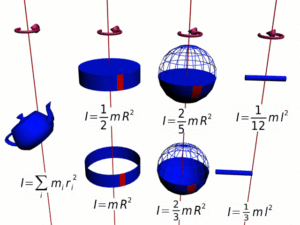
To truly appreciate the advancements in biophysics, we must delve into the impressive repertoire of methods it employs. These techniques not only bridge the gap between physics and biology but also pave the way for groundbreaking discoveries. Let’s explore some of these fascinating methods and understand how they contribute to our understanding of biological systems.
Atomic force microscopy (AFM) is a remarkable tool that has revolutionized the visualization of DNA structures. Unlike traditional microscopy that relies on light or electrons, AFM uses a tiny mechanical probe to scan surfaces at the nanometer scale. The probe delicately touches the surface, allowing it to produce images with astonishing resolution. This capability is crucial for studying the intricate details of DNA, such as its double helix structure, variations, and interactions with proteins. By offering a three-dimensional view at atomic resolution, researchers can gain insights into how DNA operates, repairs itself, and interacts with other molecules, which are essential aspects of genetic research.
Moving from DNA to proteins, another essential tool in biophysics is X-ray crystallography. This method involves directing X-rays at crystallized samples of proteins. The X-rays scatter upon hitting the atoms within the crystal, creating a diffraction pattern. Scientists then analyze this pattern to determine the protein’s three-dimensional shape. Understanding the precise structure of proteins is critical because it reveals how they function and interact within cells. For instance, by deciphering the structure of enzymes, researchers can develop inhibitors that target specific enzymes involved in diseases, leading to new drugs and therapies. Moreover, X-ray crystallography has been pivotal in elucidating the structures of complex biological entities like ribosomes, which play a vital role in synthesizing proteins within cells.
As we continue our journey through biophysical methods, optical tweezers present another innovative technique. Invented in the 1980s, optical tweezers use focused laser beams to trap and manipulate small particles, including single molecules. This method has enabled scientists to study molecular motors—proteins that convert chemical energy into mechanical work. By observing how these motors move and exert force, researchers gain clues about cellular processes such as muscle contraction, intracellular transport, and even cell division. Optical tweezers have also been instrumental in examining the mechanical properties of DNA and protein-protein interactions, providing invaluable data on how these molecules behave under different conditions.
Magnetic resonance imaging (MRI) might be more familiar to many as a medical diagnostic tool, but it also represents a significant biophysical technique. MRI uses strong magnetic fields and radio waves to generate detailed images of the body’s internal structures. In the context of biophysics, MRI allows for non-invasive examination of tissues and organs at high resolution. This ability to peer inside the body without surgical intervention has transformed medical diagnostics and treatment planning. For example, MRI can detect tumors, monitor brain activity, and assess heart function, among other applications. The detailed imagery provides clinicians and researchers with critical information about the health and functionality of various biological systems, aiding in early diagnosis and better understanding of diseases.
Each of these methods exemplifies the powerful synergy between physics and biology. With atomic force microscopy, we uncover the fine details of DNA; through X-ray crystallography, we grasp the intricate shapes of proteins; using optical tweezers, we manipulate single molecules to study their properties; and with MRI, we visualize the inner workings of the human body. These biophysical tools reveal the hidden complexities of life’s building blocks, offering profound insights that drive scientific progress.




